But Can It Run Crysis? 10 Years Later
For Crysis' 10th anniversary, we tested all of the flagship AMD and Nvidia GPUs released over the last decade at 1080p, 1440p, and 4K.
3840x2160 Results
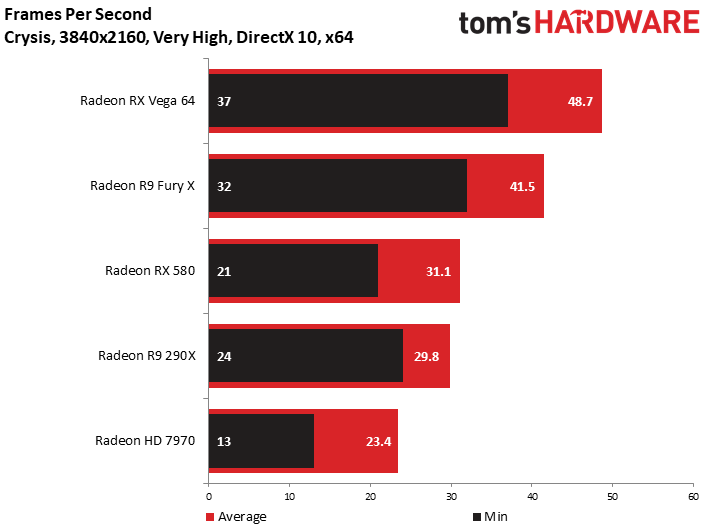
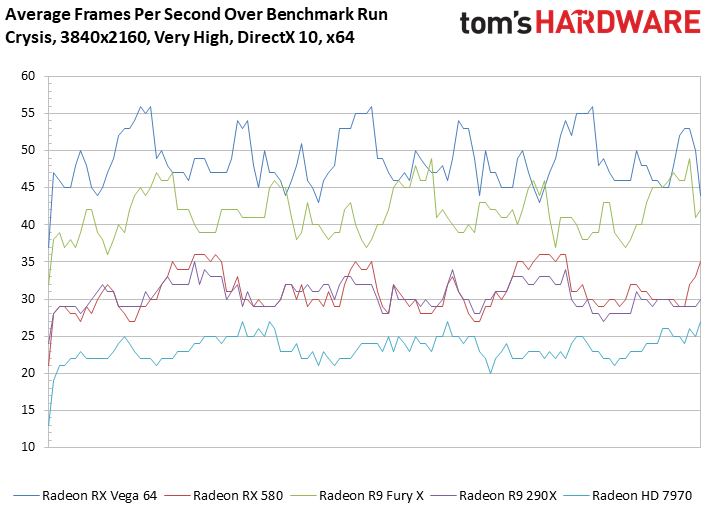
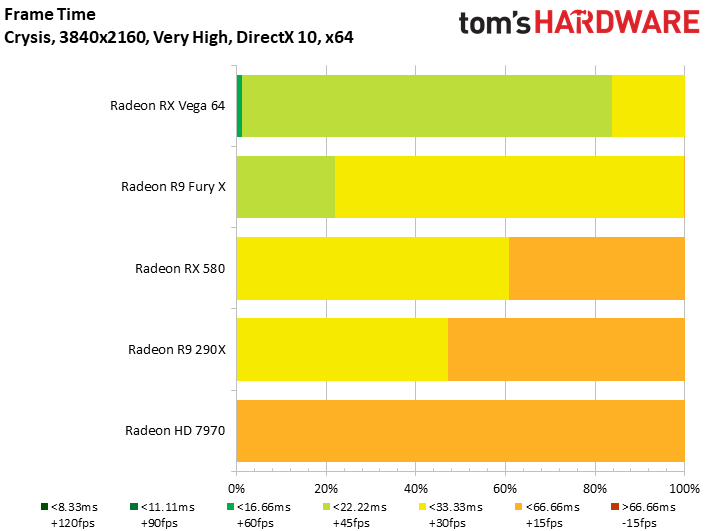
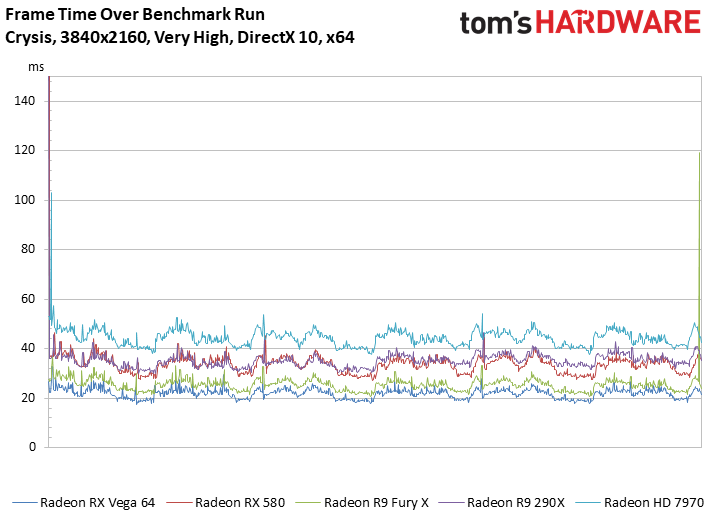
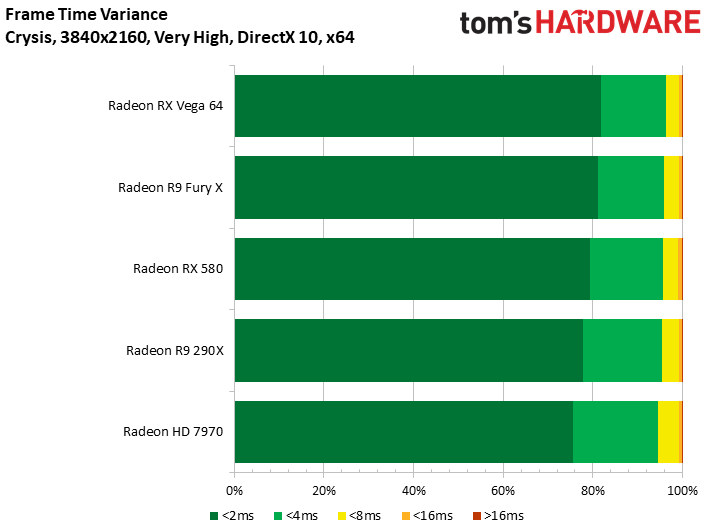
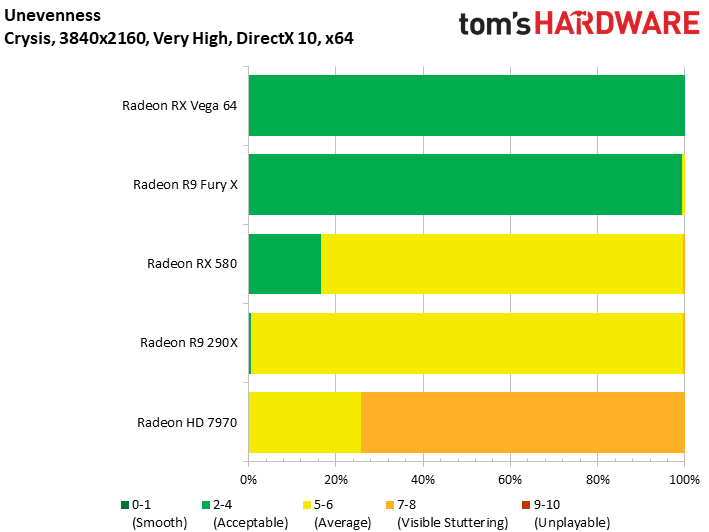
Ten years ago, we benchmarked the Radeon HD 3870 at a maximum resolution of 1600x1200, rendering 1.9 million pixels per frame at an average of ~15 FPS. Call that ~30 million pixels per second. Today, we have to manually configure Crysis to run at a resolution of 3840x2160, or 8.2 million pixels per frame. And AMD’s Radeon RX Vega does this at almost 50 FPS (~404 million pixels per second). Dang.
Beyond a certain point, AMD’s display controllers simply won’t work with our 4K monitor, so we’re happy to draw the line at Radeon HD 7970. That first-gen GCN-based board isn’t playable anyway, at just under half the frame rate of Radeon RX Vega 64.
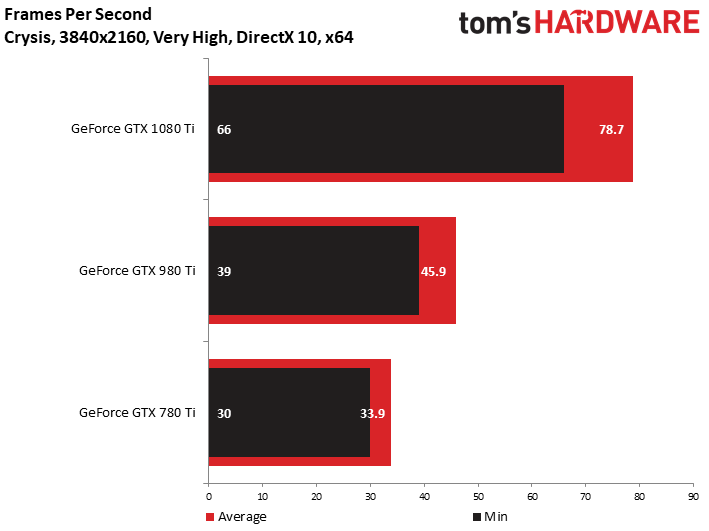
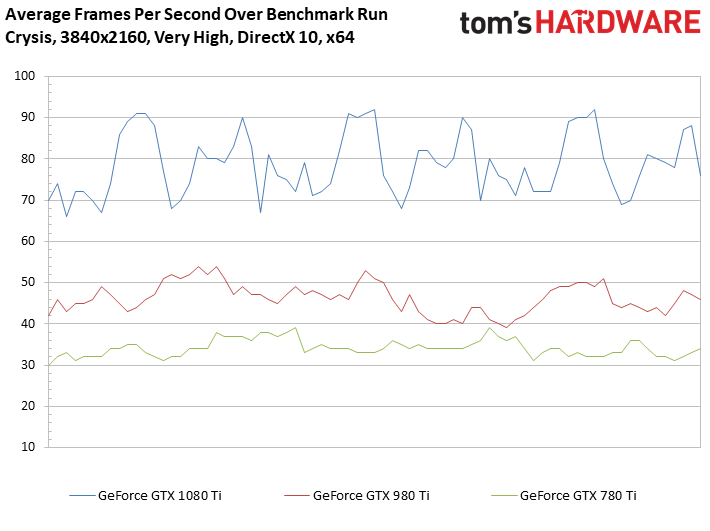
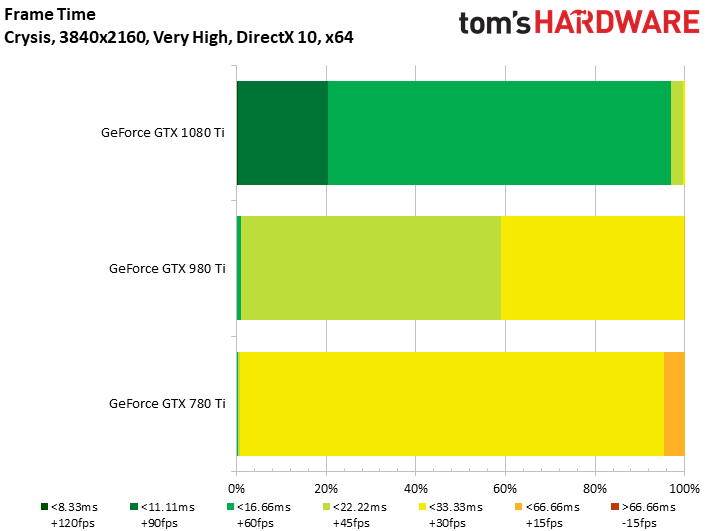
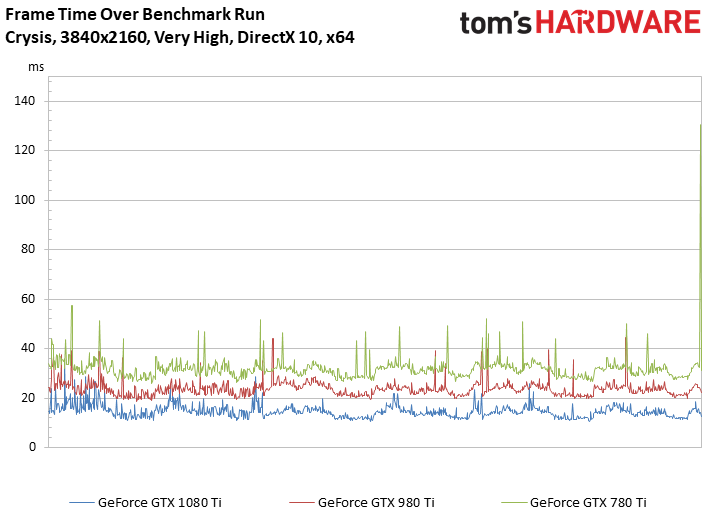
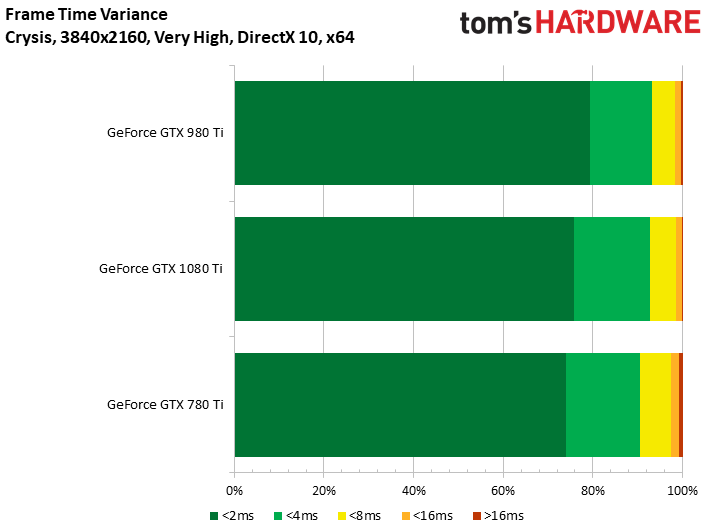
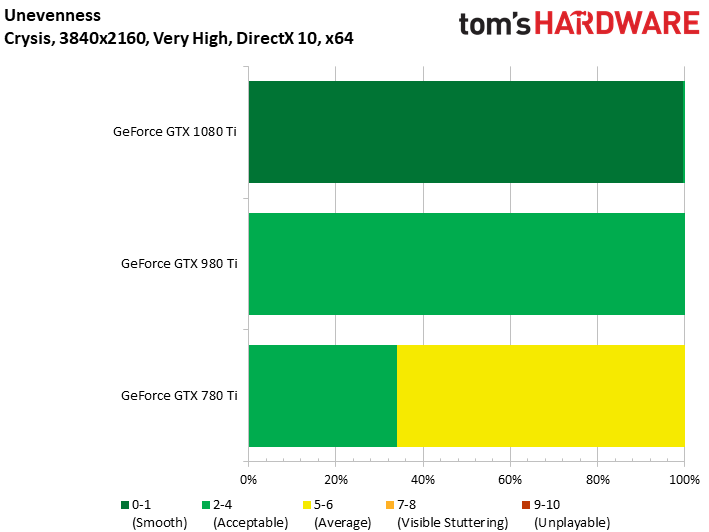
Even fewer of Nvidia’s cards cooperated with our 4K screen, so we pulled the plug at GeForce GTX 780 Ti. It was for the best, perhaps, as that 2013-era card averaged just over 30 FPS.
The real news, however, is GeForce GTX 1080 Ti, averaging nearly 80 FPS at 4K in Crysis. Ten years on, and there’s exactly one gaming graphics card (we’re not counting Titan cards here) able to do this. Everything else from AMD and Nvidia fails to break the symbolic 60 FPS mark.
8x Anti-Aliasing Results
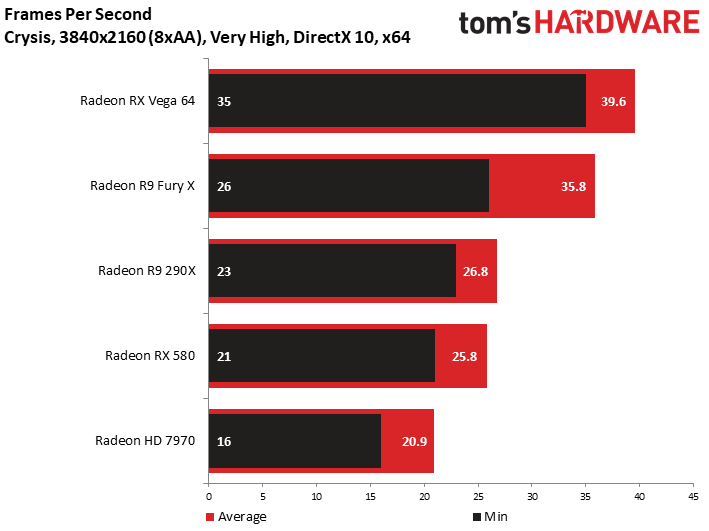
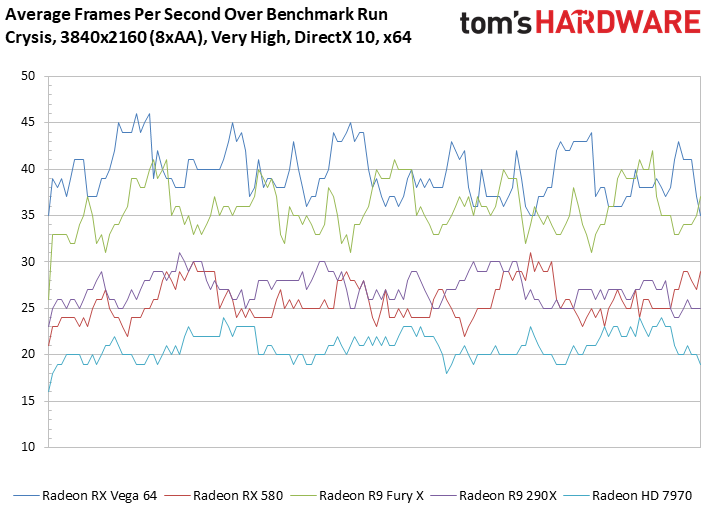
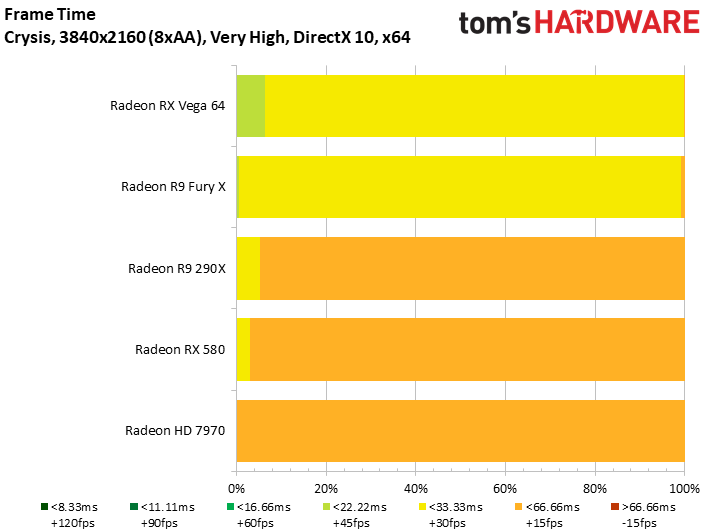
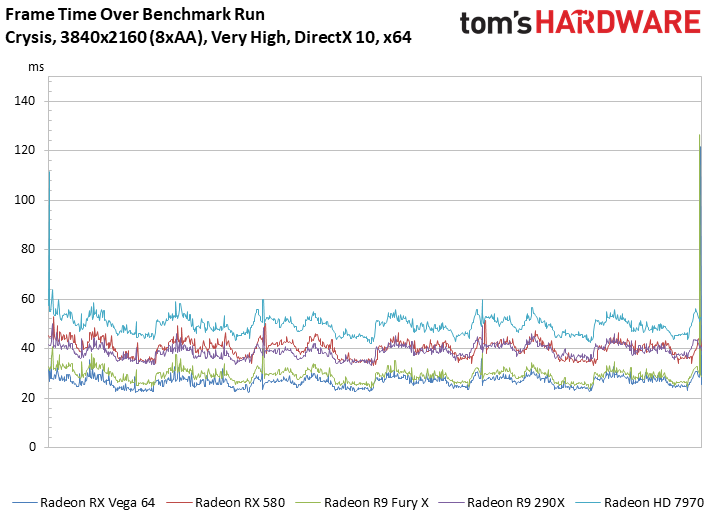
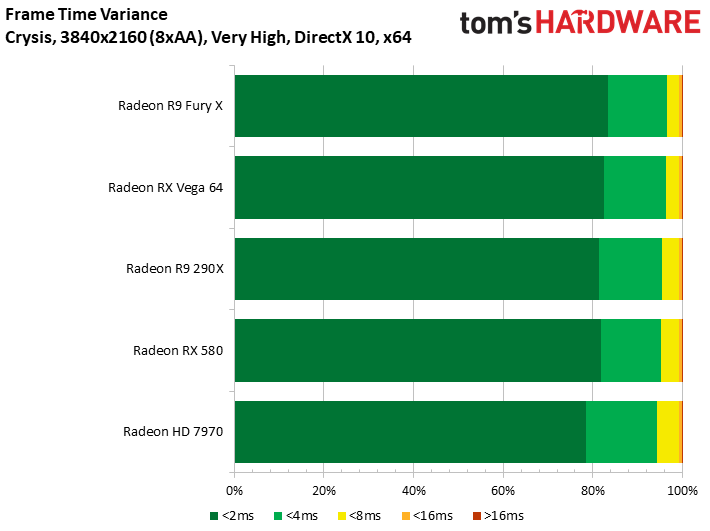
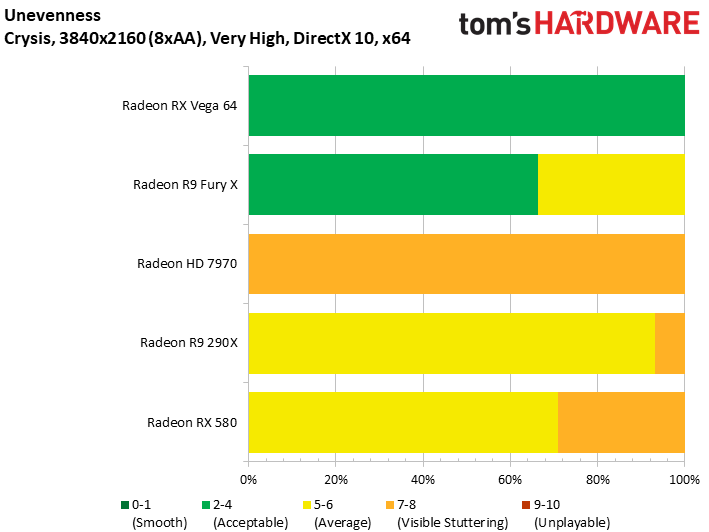
We include 4K anti-aliased results for the sake of completeness, but even AMD’s fastest graphics card fails to break the 40 FPS mark. Fortunately, frame time variance is low at this resolution, so our unevenness index indicates acceptable smoothness. Radeon R9 Fury X isn’t far behind either, beating Radeon R9 290X by nearly 34%.
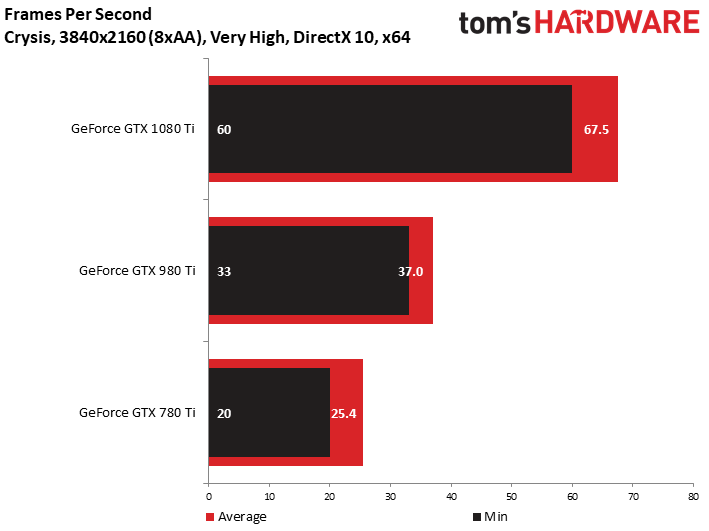

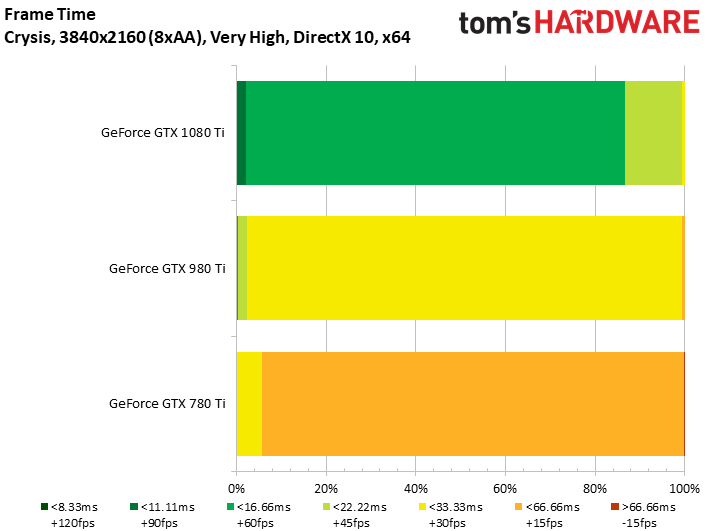
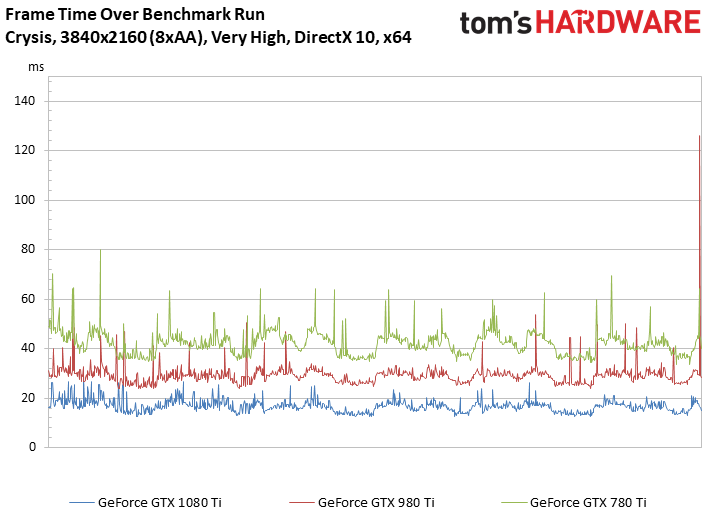
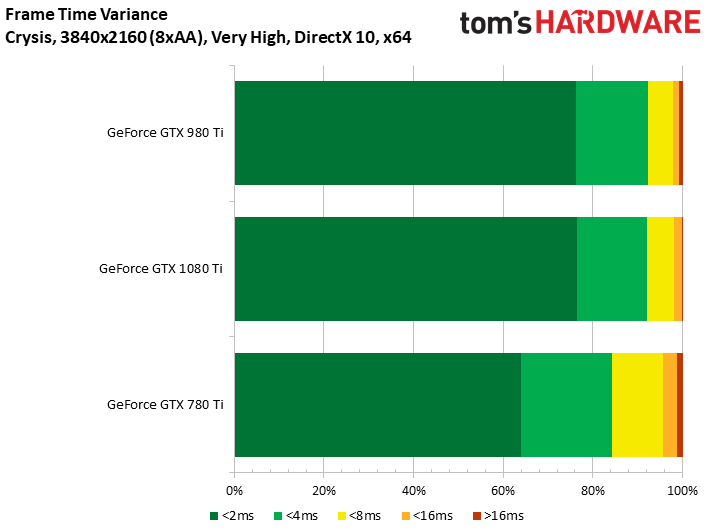
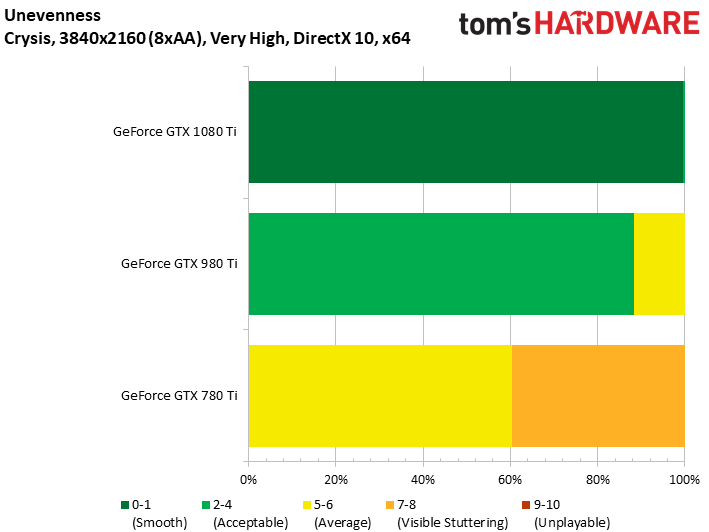
But that’s nothing compared to GeForce GTX 1080 Ti, which trounces Nvidia’s 980 Ti by more than 82%. It doesn’t even drop below 60 FPS through our benchmark sequence.
MORE: Best Graphics Cards
Get Tom's Hardware's best news and in-depth reviews, straight to your inbox.
MORE: Desktop GPU Performance Hierarchy Table
MORE: All Graphics Content

